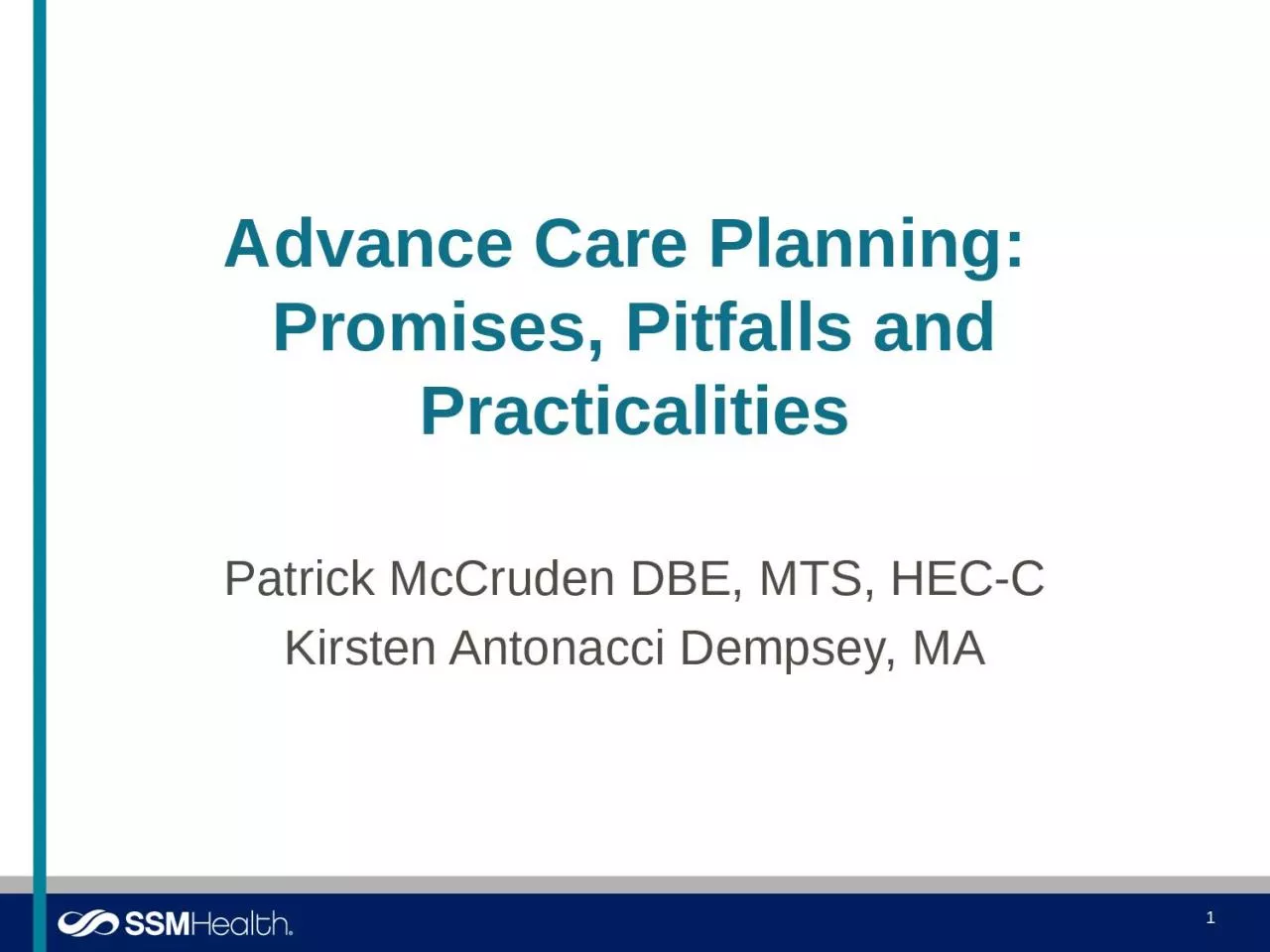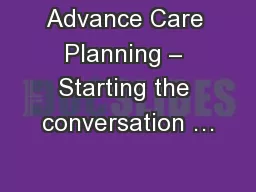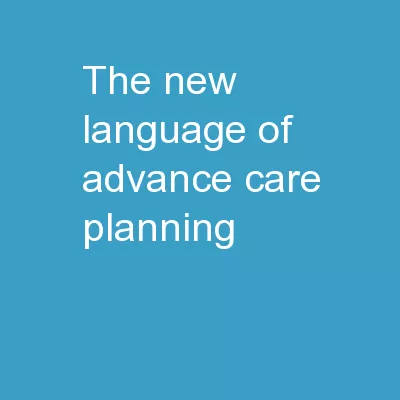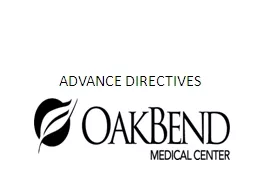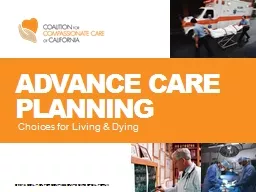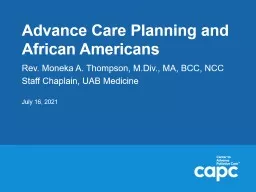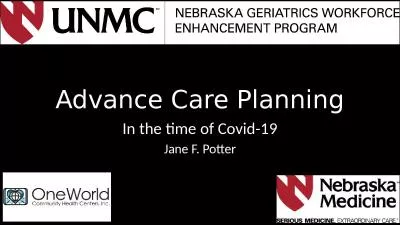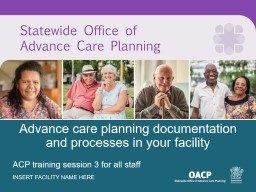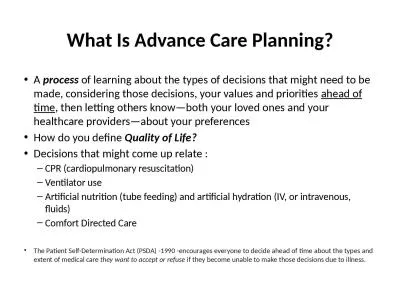PPT-Advance Care Planning: Promises, Pitfalls and Practicalities
Author : smith | Published Date : 2024-01-29
Patrick McCruden DBE MTS HECC Kirsten Antonacci Dempsey MA 1 Agenda Defining Our Terms Promises Ethical Foundations History Pitfalls and Challenges Research Public
Presentation Embed Code
Download Presentation
Download Presentation The PPT/PDF document "Advance Care Planning: Promises, Pitfal..." is the property of its rightful owner. Permission is granted to download and print the materials on this website for personal, non-commercial use only, and to display it on your personal computer provided you do not modify the materials and that you retain all copyright notices contained in the materials. By downloading content from our website, you accept the terms of this agreement.
Advance Care Planning: Promises, Pitfalls and Practicalities: Transcript
Download Rules Of Document
"Advance Care Planning: Promises, Pitfalls and Practicalities"The content belongs to its owner. You may download and print it for personal use, without modification, and keep all copyright notices. By downloading, you agree to these terms.
Related Documents

